Ever find yourself daydreaming about strapping on those boots and embarking on a long-distance hike? Yeah, been there. It’s an enticing adventure, but let me tell you from my own rendezvous with the Pacific Crest Trail, it isn’t exactly a walk in the park.
But hey, don’t sweat it! This article is all about helping you conquer any fears or uncertainties you might have. We’ve got 13 unbeatable tips lined up for you to tackle anything from intimidating mountain ranges to serene forest trails.
Let’s make your dreamed hike much more than just an exciting memory; let’s turn it into a successful story that’ll continue inspiring you!
Key Takeaways
- Invest in high-quality boots and socks for comfort and foot protection during a long-distance trek.
- Pack light by choosing compact gear and using space-saving techniques to avoid feeling burdened on the trail.
- Test all equipment beforehand to ensure everything works properly and fits comfortably before embarking on the trek.
- Prioritize blister prevention by wearing proper socks and well-fitting boots, practicing foot care, and using blister prevention products.
- Stay motivated throughout the trek and embrace challenges with a positive mindset to achieve success.
Essential Gear and Preparation
Invest in high-quality boots and socks to ensure comfort and durability throughout your trek.
Invest in high-quality boots and socks
Good shoes are a must for hiking. Your feet do all the work, so they need top-shelf stuff. High-quality boots never disappoint. They give your feet comfort and stop them from getting hurt on rough roads.
Good socks are also important as they keep your feet dry and free from blisters. I use expert advice on hiking boots to pick mine because the right fit matters a lot in how they feel on my foot.
Don’t forget, traction and support count too when choosing boots or shoes for hiking!
Break in your boots before the trek
New boots need time to get used to your feet. It is wise to break them in before your long trip. This helps you avoid pain and sores on the trail. Start by wearing your new boots around the house or on short walks.
Slowly, take them out on off-road trails. These wild paths are best for shaping the boot to your foot.
Just like you, your boots may not be ready for a big hike right away. If they don’t feel comfy yet, have blister plasters with you as a backup plan during longer tours. Good fitting boots make all the difference in having fun while hiking! So step by step, help those new boots become old friends ready to walk miles with you!
Pack as light as possible
Packing light is key for a great trek. It’s all about taking only what you need. You can do this by choosing compact gear and using space-saving techniques. For example, roll your clothes instead of folding them to save room in your backpack.
Go for lightweight equipment that doesn’t add much weight but still meets your needs. This way, you don’t get tired easily from carrying extra load on the trail. Making these smart choices lets you enjoy your hike without feeling burdened by too much stuff!
Optimize your sleeping bag
For a successful long-distance trek, it’s crucial to optimize your sleeping bag. The fit of your sleeping bag is important as it affects warmth, weight, and comfort. Make sure the temperature rating matches the conditions you’ll be facing.
Consider whether you want a down or synthetic fill – both have their pros and cons. To save space in your backpack, use a compression sack to pack your sleeping bag tightly. Don’t forget about insulation from the ground by using a sleeping pad.
A waterproof shell can protect you from moisture while a hood and draft collar keep heat in. Lastly, consider the zipper and tapered shape for ease of use and efficient thermal efficiency.
Waterproof your backpack
To keep your gear dry during long-distance trekking, it’s important to waterproof your backpack. One effective way to do this is by using a pack liner. A pack liner is a waterproof bag that you put inside your backpack to keep everything dry, even in wet conditions.
It provides an extra layer of protection against rain, rivers, and creeks. Another option is to use a large dry sack inside your bag. This can help protect your belongings from water damage.
Remember, when hiking in windy conditions, a rain cover may not be effective as it can blow off or create noise. So make sure to choose the right method of waterproofing for your backpack and enjoy a worry-free trek!
Test all equipment beforehand
Before going on a long-distance trek, it’s really important to test all your equipment beforehand. This will help you make sure that everything works properly and fits comfortably.
You wouldn’t want to discover any problems or discomfort while you’re out on the trail! So take some time before your trek to check that your boots are in good condition and that they fit well, since they’ll be carrying you for many miles.
Test out your sleeping bag and make sure it keeps you warm enough at night. And don’t forget to try on your backpack with all your gear inside to see if it feels comfortable and distributes the weight evenly.
Testing all your equipment ahead of time will give you peace of mind knowing that everything is ready for a successful hike.
It’s worth noting that testing all equipment beforehand is one of the 13 amazing tips for achieving success in long-distance trek planning. It’s recommended because it ensures that essential hiking gear is working properly before embarking on a journey.
Gradually build your fitness level
To prepare for a long-distance trek, it’s important to gradually build your fitness level. Start by incorporating exercises that will improve strength and balance, like lunges, squats, and calf raises.
Additionally, practice stepping on and off a step or exercise platform to gradually increase your endurance. Set achievable targets and track your progress in a training log. Remember to start slowly and steadily, allowing your fitness levels to improve over time.
By following these steps, you’ll be well-prepared physically for the challenges of a long-distance trek.
Stay motivated and avoid laziness
Staying motivated and avoiding laziness is crucial for a successful long-distance trek. It’s important to remember that completing a thru-hike, no matter the speed, is an incredible accomplishment.
To stay motivated, I recommend keeping a training diary and tracking the benefits of physical exercise. This will not only help you monitor your progress but also serve as a reminder of how far you’ve come.
Don’t be afraid to reward yourself when you reach fitness goals along the way – treating yourself can be a great motivator. Remember, if you struggle with lack of motivation or have fears and anxieties, don’t blame it on laziness.
Comprehensive Guide on Long-Distance Trek Planning
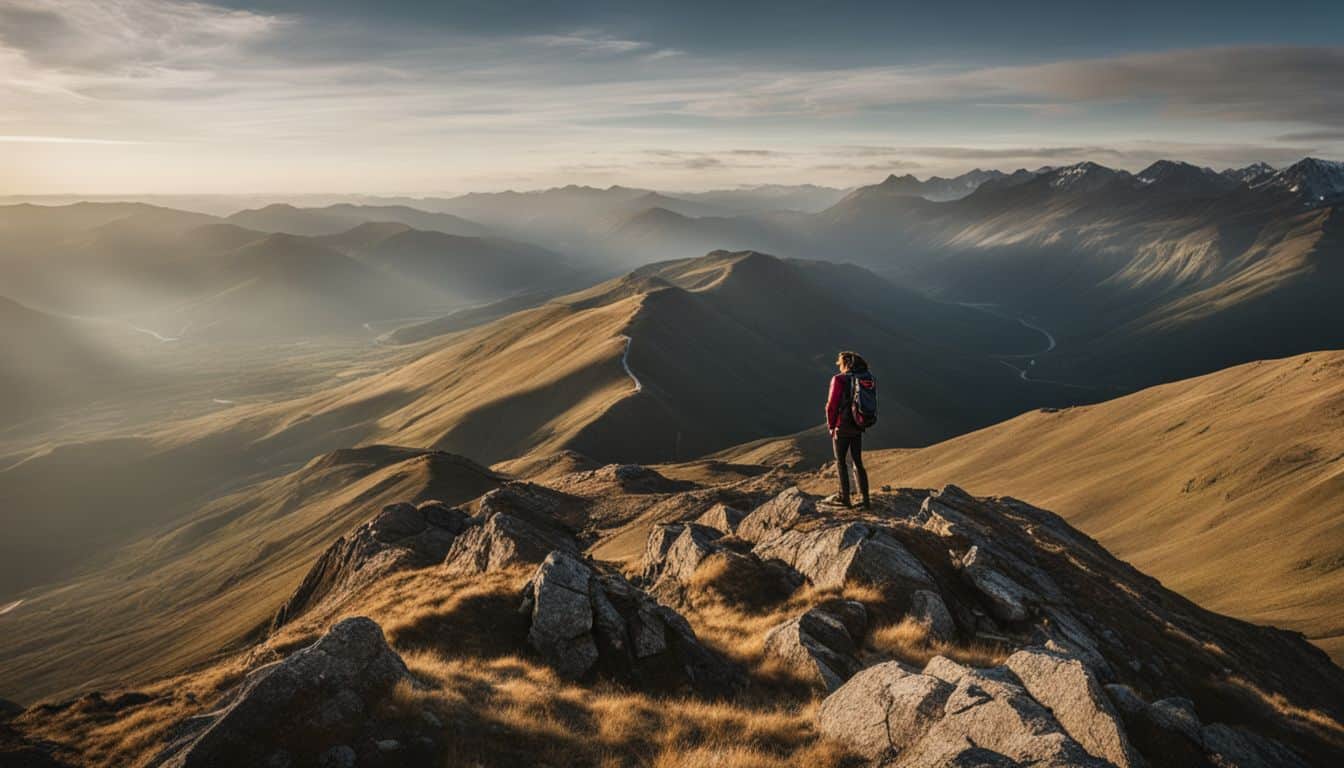
Planning a long-distance trek or thru-hike requires careful consideration and preparation. To ensure a successful and enjoyable experience, it is essential to have a comprehensive guide that covers all aspects of the planning process.
Logistics play a crucial role in this journey, so it’s important to thoroughly research the hike’s destination and route. Look for trails that offer diverse landscapes like valleys, deserts, and mountains.
When planning your trek, involve trip leaders who have experience in long-distance hiking. They can provide valuable insights into the challenges you may face along the way and help you navigate through them.
It’s also important to consider safety measures such as carrying necessary equipment like navigation tools, first aid kits, emergency shelters, and extra food.
Additionally, plan your itinerary carefully by considering factors like distance covered each day, available water sources along the trail, camping spots or accommodations if necessary.
This will help you stay organized throughout your journey.
Remember that long-distance trekking isn’t always glamorous; there may be challenging moments or unfavorable weather conditions. However, maintaining a positive mental attitude is key in overcoming these obstacles.
Embrace the journey and enjoy every step of the process.
By following this comprehensive guide on long-distance trek planning with proper logistics in place and taking care of safety concerns while maintaining an optimistic mindset throughout your adventure ensures a successful achievement on your long-distance trek or thru-hike!
Preventing Blisters and Taking Care of Feet
To prevent blisters while trekking, prioritize blister prevention by wearing the right socks and properly fitting boots. Additionally, practice proper foot care by keeping your feet clean and dry, trimming toenails regularly, and using blister prevention products like moleskin or tape.
Prioritize blister prevention
Preventing blisters should be a top priority when planning for a long-distance trek. Blisters can be painful and make walking difficult. To prevent them, it’s important to wear good-fitting boots and thin liner socks.
Proper footwear fit is crucial in eliminating friction that causes blisters. Using merino wool or polypropylene liners in cold conditions, or Coolmax liners in warm to hot conditions, can also help prevent blisters by managing moisture and reducing heat buildup.
By prioritizing blister prevention, you can ensure a more enjoyable and pain-free hiking experience.
Practice proper foot care
Taking care of your feet is crucial when it comes to long-distance treks. Here are some tips for practicing proper foot care:
- Wear the right footwear: Invest in a pair of sturdy walking boots that provide good ankle support. Choose socks made from moisture-wicking materials to keep your feet dry.
- Protect pressure points: Use tape or blister prevention pads on areas where you tend to develop blisters, such as heels or toes. This helps reduce friction and prevent painful blisters.
- Maintain toenail hygiene: Regularly trim your toenails before the trek to prevent ingrown nails and discomfort. Cut them straight across and avoid cutting them too short.
- Moisturize your feet: Dryness can lead to cracked skin and discomfort. Apply a moisturizer with natural ingredients to keep your feet hydrated during the trek.
- Take breaks to air out your feet: Whenever you stop for a break, remove your shoes and socks to let your feet breathe and dry out any sweat.
- Treat blisters promptly: If you do develop blisters, address them immediately by cleaning them with antiseptic wipes and covering them with blister bandages or moleskin.
Tips for the Trek
– Take and give generously to fellow trekkers, offering assistance and sharing resources when needed.
Take and give generously
During long-distance treks, it’s crucial to remember the power of taking and giving generously. The hiker community is incredibly supportive and kind, always ready to lend a helping hand or provide assistance when needed.
Whether it’s sharing trail advice, offering extra food or gear, or simply providing encouragement along the way, being open to both receiving and giving help creates a sense of camaraderie that enhances the entire experience.
Additionally, businesses located along popular trails often go out of their way to support thru-hikers by offering services such as free showers or discounted meals. By embracing this concept of generosity and selflessness, we can foster a strong community founded on empathy, cooperation, and collaboration while embarking on our long-distance treks.
Always check your surroundings after breaks
Checking your surroundings after breaks is an important aspect of long-distance trek planning. It helps ensure your safety and the safety of your hiking group. By being aware of your surroundings, you can spot any potential hazards or changes in the environment that may have occurred while you were on a break.
This includes checking for any signs of wildlife, assessing the terrain conditions, and making sure you haven’t left anything behind. Taking a moment to be mindful of your surroundings before continuing on the trek can prevent accidents and keep everyone on track towards their goal.
So always remember to stay alert and observant when resuming the hike after taking breaks.
Maintain regular hydration and nutrition
Staying hydrated and nourished is crucial for a successful long-distance trek. It’s important to drink enough fluids throughout the day and eat nutritious foods to keep your energy levels up.
Try to consume potassium-rich foods like bananas, citrus fruits, and tomato juice to help with hydration. Before your hike, try pre-hydrating by drinking at least 4 cups of water. During the trek, aim for about 2 cups of water per hour to stay hydrated.
Afterward, make sure to drink 16 to 20 ounces of water or sports drinks every hour for a few hours to fully rehydrate. Remember, proper hydration is essential for your comfort and overall health while hiking.
Get enough sleep for recovery
Sleep is incredibly important for your body and mind to recover after a long hike or trek. It’s not just about resting, but also about giving your muscles and brain the chance to recharge.
When you sleep, your body goes into repair mode, fixing any damage caused by physical exertion. Lack of sleep can make you feel out of sorts and affect your performance on the trail.
So, make sure you prioritize getting enough shut-eye to ensure that you’re at your best for every adventure!
Pace yourself and don’t push too hard
When embarking on a long-distance trek, it is important to pace yourself and not push too hard. Sustaining a steady tempo and allowing for regular breaks is crucial for a safe and smooth descent.
Overexerting oneself can detract from the overall enjoyment of the adventure. By maintaining a moderate speed and incorporating brief pauses every 20-30 minutes, you can ensure a successful and injury-free journey.
Remember, straining too much while hiking can diminish the pleasure derived from the outing. So, balance your effort and give yourself regular intervals of rest to have a satisfying long-distance hike without pushing too hard.
Take bathroom breaks when needed
During long-distance treks, it’s important to listen to your body and take bathroom breaks when needed. Find a suitable spot away from the trail where you can have some privacy. Remember to face downhill while going to the toilet, as this helps with balance and stability.
If you use trekking poles, they can provide extra support during these breaks. Personal comfort and hygiene should be considered when peeing or pooping outdoors. And please, remember not to leave toilet paper behind when you pee outside – make sure to pack it out with you for proper disposal later on.
Taking care of your body’s needs while on a trek is important for your overall well-being and enjoyment of the journey.
Dealing with Challenges and Mental Fatigue
Be prepared for challenging moments on your long-distance trek. Maintain a positive mental attitude and believe in your ability to succeed. Embrace the journey and enjoy the process.
Find out more about how to overcome challenges and stay mentally strong while trekking by reading the full article.
Be prepared for challenging moments
Preparing for a long-distance trek means being ready for the tough times that may arise along the way. Mentally training yourself before embarking on the journey is essential to overcome obstacles and stay motivated.
Remind yourself of why you wanted to do this trek in the first place, as it will help you push through those difficult moments. And remember, many people don’t complete thru-hikes due to unrealistic expectations, mental fatigue, lack of financial resources, or not being physically fit enough.
So be prepared mentally and physically, and believe in your ability to succeed. Embrace the challenges as part of the journey and enjoy every step of it!
Maintain a positive mental attitude
Having a positive mental attitude is crucial when it comes to long-distance trek planning. It can make all the difference in how you tackle challenges and overcome mental fatigue along the way.
Approaching your journey with optimism and resilience can greatly improve your psychological well-being and overall experience. By cultivating a positive mindset, you open yourself up to countless possibilities and opportunities for personal growth.
Regular exercise, such as hiking, has been linked to better mental health, lower rates of mental illness, and improved emotional stability. So remember, maintaining a positive mental attitude not only helps you cope with the difficulties of trekking but also brings positive things and outcomes into your life.
Believe in your ability to succeed
Believing in your ability to succeed is crucial when it comes to long-distance trek planning. It can boost your motivation and mental well-being, which are essential for a successful hiking experience.
Having self-confidence allows you to push through challenges and fatigue, knowing that you have what it takes to overcome them. Building resilience and cultivating self-efficacy not only contributes to achieving success on the trail but also carries over into other aspects of life.
So, embrace the journey with confidence, knowing that you have the skills and determination to succeed.
Embrace the journey and enjoy the process
During long-distance trek planning, it’s important to embrace the journey and enjoy the process. Instead of solely focusing on reaching your end goal, take time to appreciate the beauty around you.
By accepting and embracing each step of the journey, you can enhance your overall experience. This mindset helps in dealing with challenges and mental fatigue that may arise during your trek.
Remember, completing a thru-hike is not just about reaching the destination; it’s also about personal growth and enjoying every moment along the way. So be mindful, stay positive, and find joy in the adventure ahead!
Tackling Boredom and Staying Motivated
Find ways to combat boredom on the trek by engaging with the environment and nature, and staying connected with fellow trekkers and friends.
Find ways to combat boredom on the trek
When you’re on a long-distance trek, it’s important to find ways to combat boredom and keep yourself engaged. Here are some tips to help you stay entertained and motivated during your hike:
- Listen to music or podcasts: Bring along a portable music player or download your favorite podcasts before the trek. Listening to music or interesting conversations can help pass the time and keep you entertained.
- Play mind games: Challenge yourself with Sudoku puzzles, crossword puzzles, or brain teasers. These mental exercises can be a fun way to keep your mind active while walking.
- Take photos: Use your phone or camera to capture the beauty of nature around you. Photography can not only be an enjoyable hobby but also a way to document your journey and create lasting memories.
- Learn about the flora and fauna: Research the plants, animals, and birds that you may come across on your trek. This knowledge will make your surroundings more fascinating and provide opportunities for learning and observation.
- Engage with fellow trekkers: Strike up conversations with other hikers you meet along the trail. Sharing stories, experiences, and tips can be an excellent way to pass the time while forming new connections.
- Practice meditation or mindfulness: Embrace the serenity of nature by incorporating moments of meditation or mindfulness into your hike. Take deep breaths, focus on the sounds around you, and appreciate the present moment.
- Explore side trails or detours: If there’s an opportunity to take a short detour from the main trail, go for it! Exploring side trails can add excitement and variety to your trek, keeping things interesting.
Engage with the environment and nature
When embarking on a long-distance trek, it’s important to engage with the environment and nature to keep motivated and avoid boredom. Being in nature has numerous benefits for our physical and mental well-being.
Studies have shown that being surrounded by green spaces can reduce stress, improve mood, and increase cognitive function. Additionally, immersing ourselves in nature allows us to appreciate the beauty of our surroundings and feel connected to something greater than ourselves.
So while you’re trekking, take the time to pause and marvel at the scenic views, listen to the sounds of birds chirping or waves crashing, and breathe in the fresh air. Engaging with nature will not only help you stay motivated but also enhance your overall trekking experience.
Stay connected with fellow trekkers and friends
Connecting with fellow trekkers and friends is essential to staying motivated on a long-distance hike. It helps alleviate the monotony and boredom that can come with trekking for extended periods.
By bonding with others who share the same passion for hiking, you can build a sense of belonging and camaraderie, which boosts your mental resilience. Interacting with friends provides an opportunity to share experiences, seek encouragement, and find support during challenging moments.
The social world of long-distance hiking offers a community where you can gather inspiration and motivation from like-minded individuals who understand the unique challenges of this adventure.
Solo or Partner Trekking
Consider the pros and cons of solo and partner trekking, and discover which option is best for you. Happy reading!
Consider the pros and cons of solo and partner trekking
While planning for a long-distance trek, it’s crucial to weigh the advantages and disadvantages of going solo or trekking with a partner. Both have their unique challenges and perks. Let’s have an in-depth look at both options to help you make an informed decision:
| Solo Trekking | Partner Trekking | |
|---|---|---|
| Pros |
|
|
| Cons |
|
|
Remember, the choice between solo and partner trekking depends on your personal preference and comfort. So, consider these factors, plan accordingly, and get set for an amazing trekking experience.
Maintain autonomy and freedom in decision-making
When it comes to long-distance trekking, one of the benefits of solo hiking is that you can maintain autonomy and make decisions on your own. You have the freedom to choose your pace, decide when and where to take breaks, and determine your itinerary without any constraints from others.
This allows you to have a personalized hiking experience that aligns with your preferences and goals. Fear of hiking alone should not discourage you from experiencing the benefits and freedom that solo hiking offers.
By embracing solo trekking, you can enjoy solitude, self-discovery, and personal growth while setting your own goals and experiencing a sense of accomplishment along the way. So don’t be afraid to venture out on your own – embrace the empowerment of autonomous outdoor exploration!
Stretching and Physical Care
Incorporate stretching into your daily routine to prevent muscle tightness and injuries. Take care of your body during the trek by listening to its needs and providing proper rest.
Give your feet extra attention to avoid blisters and discomfort. Read more about these essential tips for physical care during long-distance treks!
Incorporate stretching into your daily routine
Stretching is an important part of my daily routine as a hiking enthusiast. It helps me stay flexible, prevents muscle strain, and keeps my joints mobile. Here are some key benefits of incorporating stretching into your daily routine:
- Strengthen back muscles and reduce the risk of muscle strain, preventing future back pain.
- Maintain a range of motion in the joints and keep muscles flexible, strong, and healthy.
- Improve flexibility of hamstring muscles in children when incorporated into daily routines.
- Improve health and wellness by boosting mood and improving sleep.
- Bring numerous benefits to the aging body by maintaining overall physical care.
Listen to your body and provide proper rest
Rest is an essential part of any long-distance trek. It’s important to listen to your body and give it the rest it needs. When we push ourselves too hard without proper rest, we can risk injury and exhaustion.
So, during your trek, make sure to take breaks when you need them. This will help prevent fatigue and allow your body time to recover. Remember that rest doesn’t mean stopping completely; you can still enjoy the beautiful surroundings while taking a breather.
By listening to your body and providing it with adequate rest, you’ll be able to stay energized and complete your trek successfully.
Take care of your feet and give them extra attention
During long-distance treks, it’s important to take care of your feet and give them extra attention. This means wearing the right walking boots and socks to prevent discomfort and blisters.
Before starting your hike, be sure to clip your toenails to avoid any pain or irritation. Additionally, soaking your feet in Epsom salts for 20 minutes can help with foot care during the trek.
Moisturizing products like Trail Toes can also condition and keep your feet healthy while hiking. By taking these steps to prioritize foot care, you’ll be able to enjoy your long-distance trek without any unnecessary discomfort or issues.
Financial and Social Support
Plan your finances for the trek, considering accommodation costs, food expenses, transportation fees, and any necessary gear purchases. Seek social support from friends and family who can provide encouragement and potentially join you on the trek or offer assistance along the way.
Share your journey and experiences with others through social media or a blog to stay connected and inspire others in their own hiking adventures.
Plan your finances for the trek
Proper financial planning is crucial for a successful long-distance trek. It’s important to budget and save money to cover the expenses of your journey. Consider how much you need to spend on gear, food, transportation, accommodation, and any additional costs that may arise.
You should also think about your long-term goals and retirement planning while making financial decisions for the trek. Running out of money during the hike can cut it short, so managing your finances well is key.
By carefully planning and saving, you can ensure that you have enough funds to enjoy your trekking adventure without unnecessary stress or worries.
Seek social support from friends and family
Having social support from friends and family can make a big difference when it comes to long-distance trek planning. It’s important to have people who understand your passion for hiking and can offer encouragement along the way.
They can provide emotional support, help you stay motivated, and even join you on your treks if they share the same interest. Research shows that having strong social connections is beneficial for mental well-being and can contribute to a sense of belonging.
So don’t hesitate to reach out to your loved ones and share your plans with them – their support will be invaluable throughout your journey. Remember, it’s always better to tackle challenges together than alone!
Share your journey and experiences with others
When planning a long-distance trek, it’s important to share your journey and experiences with others who have similar interests. By connecting with fellow hikers, you can build a supportive community where you can learn from each other, gather valuable insights, and receive advice and guidance.
Sharing stories of your trekking adventures not only helps you connect on a social level but also empowers each member of the group to plan collaboratively and provide mutual assistance.
Additionally, sharing experiences can provide valuable support in terms of financial planning for the trek. So don’t hesitate to reach out and share your journey with others – it can make your trek even more rewarding!
Conclusion on Long-Distance Trek Planning
In conclusion, planning a long-distance trek requires careful preparation and the right mindset. By investing in quality gear, taking care of your feet, staying motivated, and embracing the challenges along the way, you can achieve amazing things on your trek.
Remember to enjoy the journey and share your experiences with others. Happy hiking!
FAQs on Long-Distance Trek Planning
1. How do I plan a long-distance trek?
To plan a long-distance trek, start by researching the trail, determining your fitness level and skill level, creating an itinerary with checkpoints and campsites along the way, preparing necessary gear and supplies, and informing someone about your plans for safety.
2. What should I pack for a long-distance trek?
When packing for a long-distance trek, make sure to include essential items such as a tent, sleeping bag, food and water provisions, appropriate clothing layers for different weather conditions, navigation tools like maps or GPS devices, first aid kit essentials like bandages and pain relievers.
3. How can I stay safe during a long-distance trek?
To stay safe during a long-distance trek, always hike with a buddy or inform someone about your planned route and estimated return time. Check weather forecasts regularly before heading out on the trail. Be cautious of wildlife encounters by storing food properly and avoiding sudden movements near animals.
4. What are some tips for achieving success in a long distance-trek?
Some tips for achieving success in a long-distance trek include training beforehand to build endurance and strength; pacing yourself along the journey; staying hydrated; listening to your body’s signals of fatigue or injuries; taking breaks when needed but also pushing through challenges mentally.
5. Are there any permits required for certain treks?
Yes, some treks may require permits depending on their location or regulations set by local authorities or national parks/mountains management organizations – it is important to research ahead of time if permits are needed so that you comply with legal requirements.

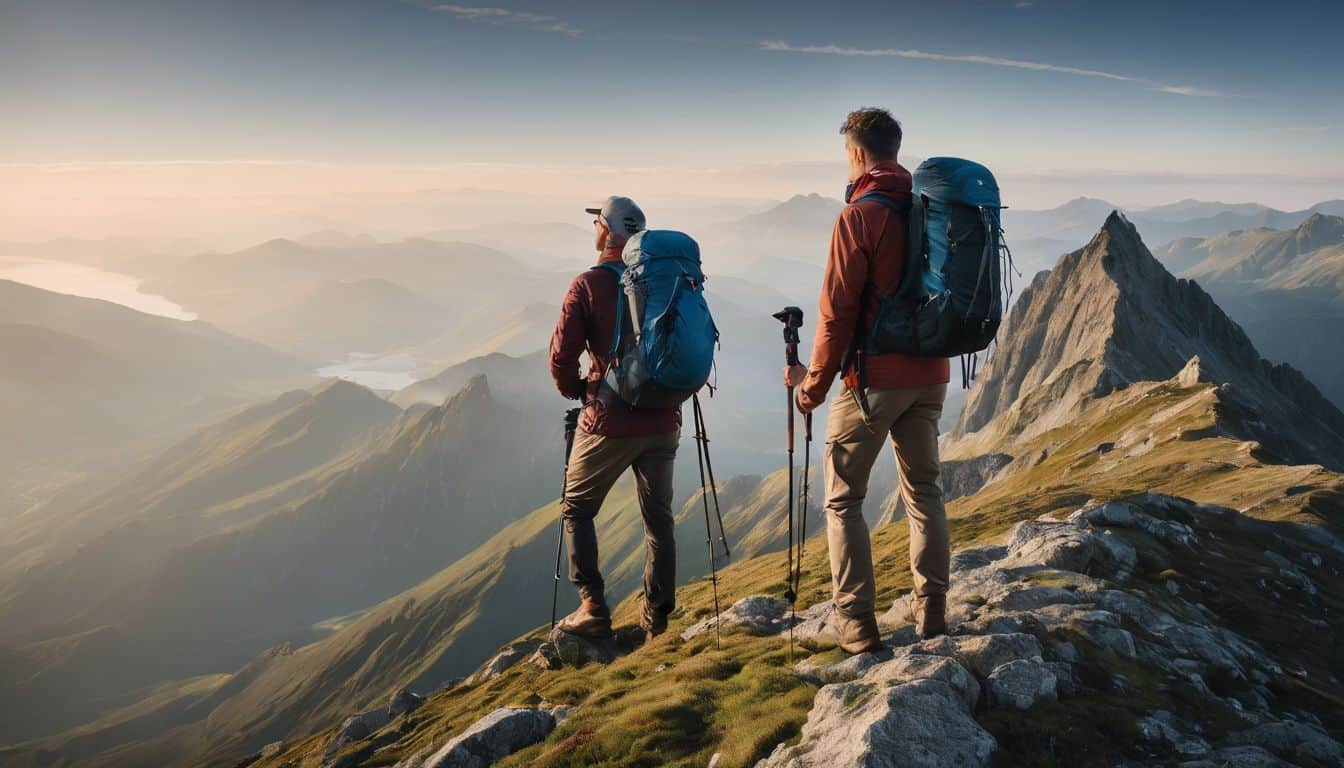
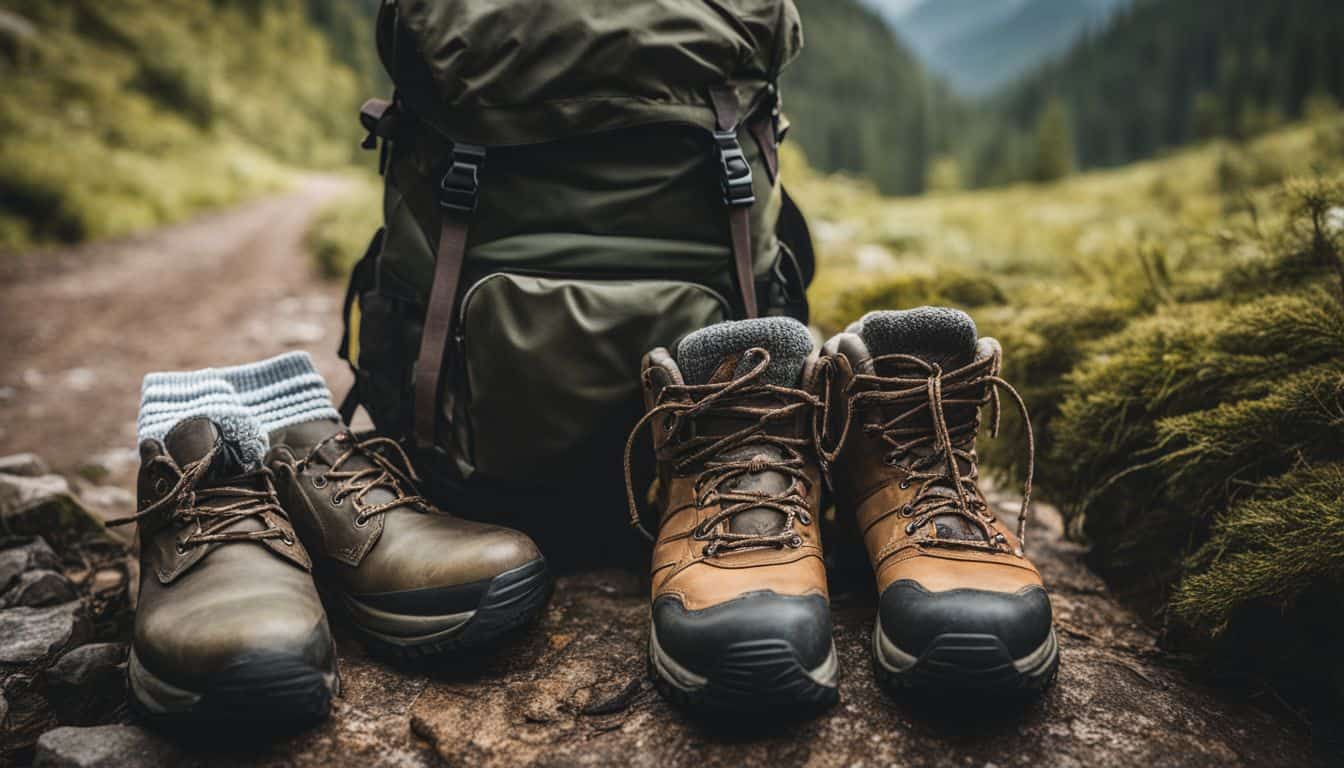
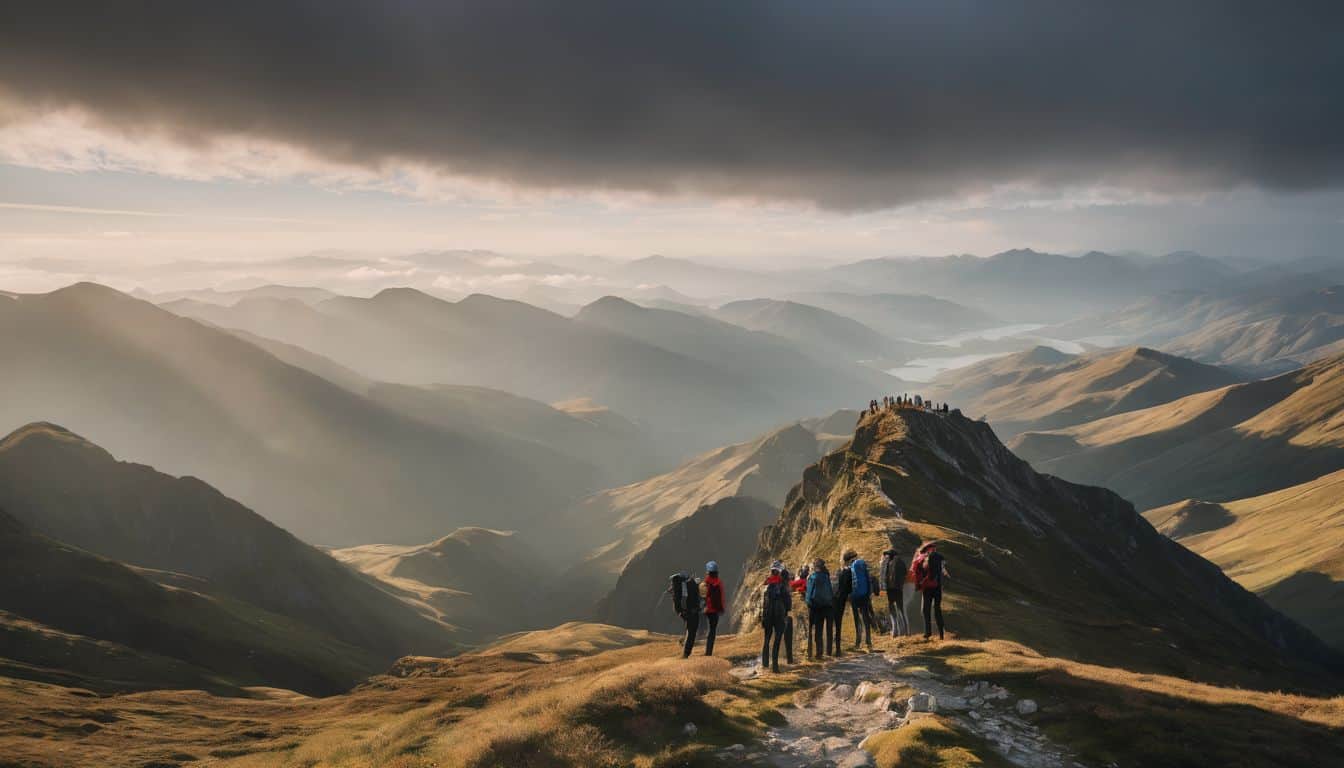
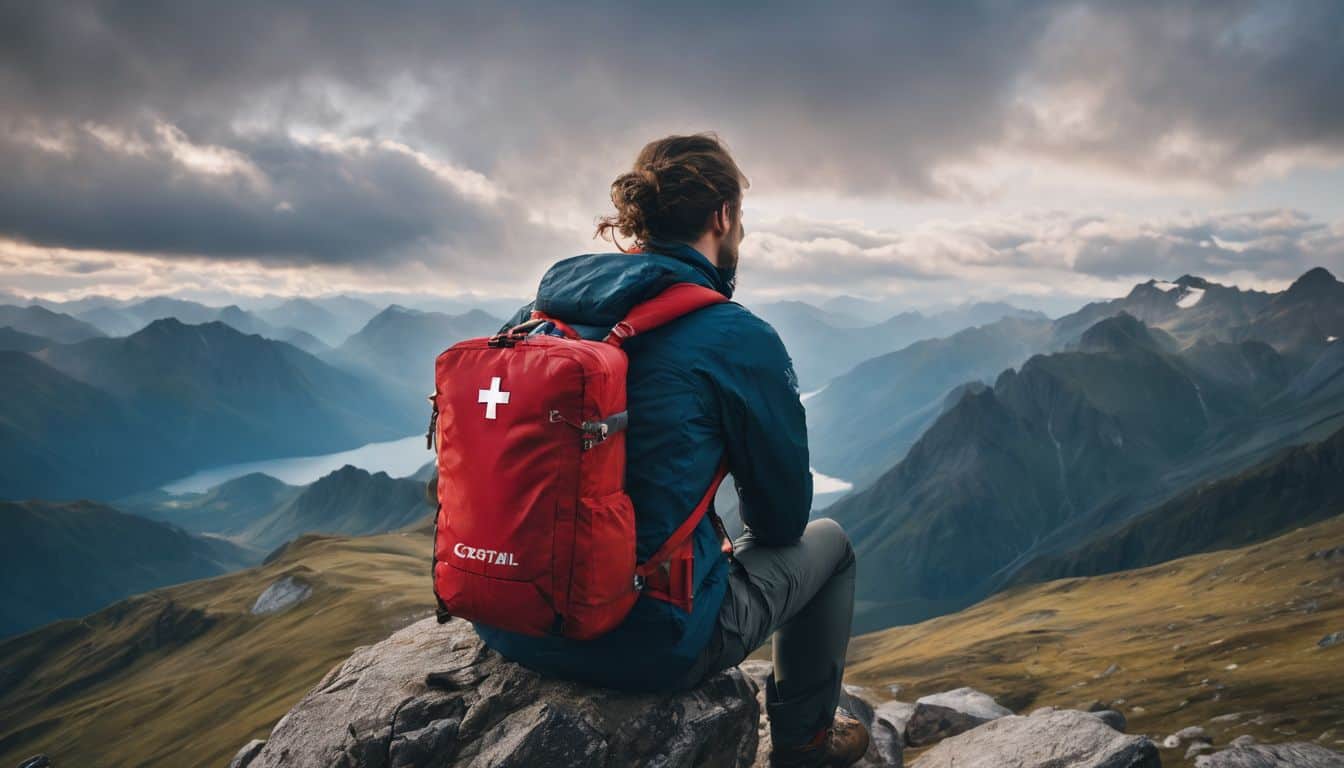
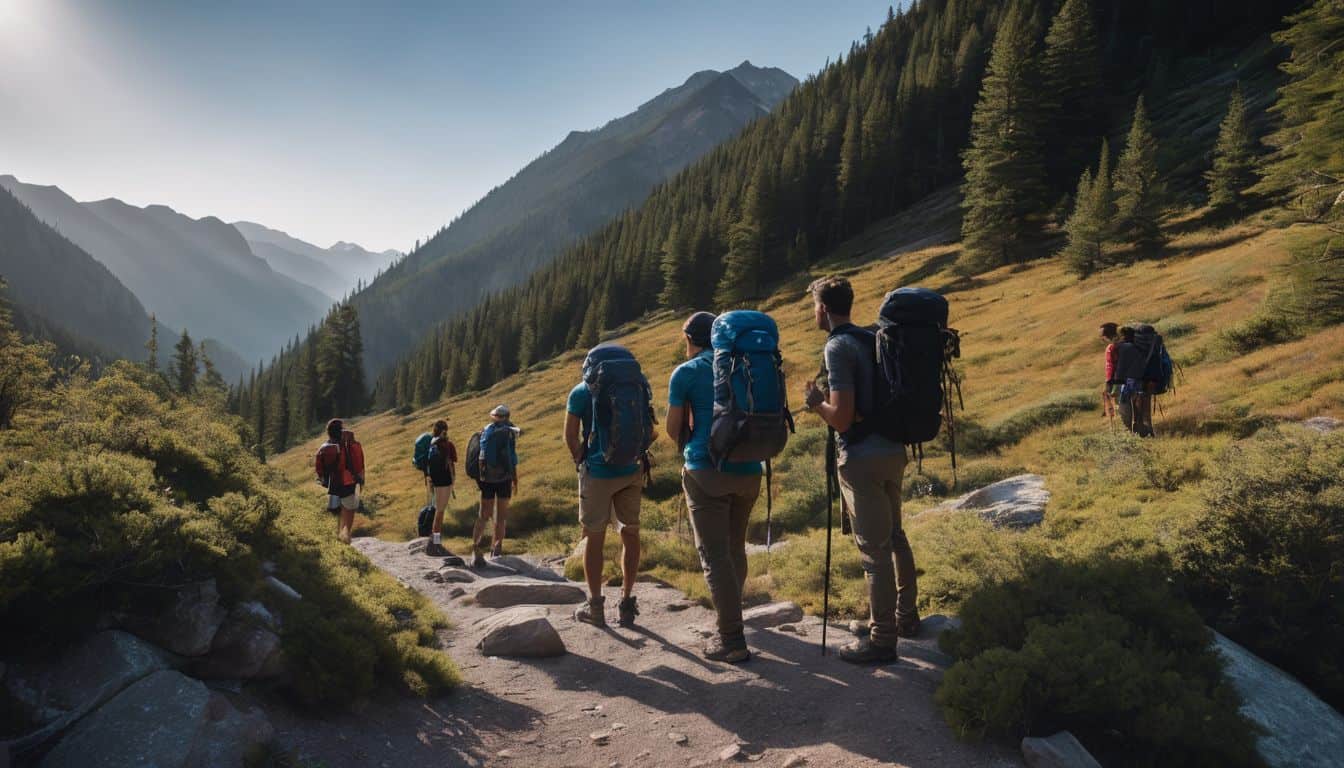
Leave a Reply